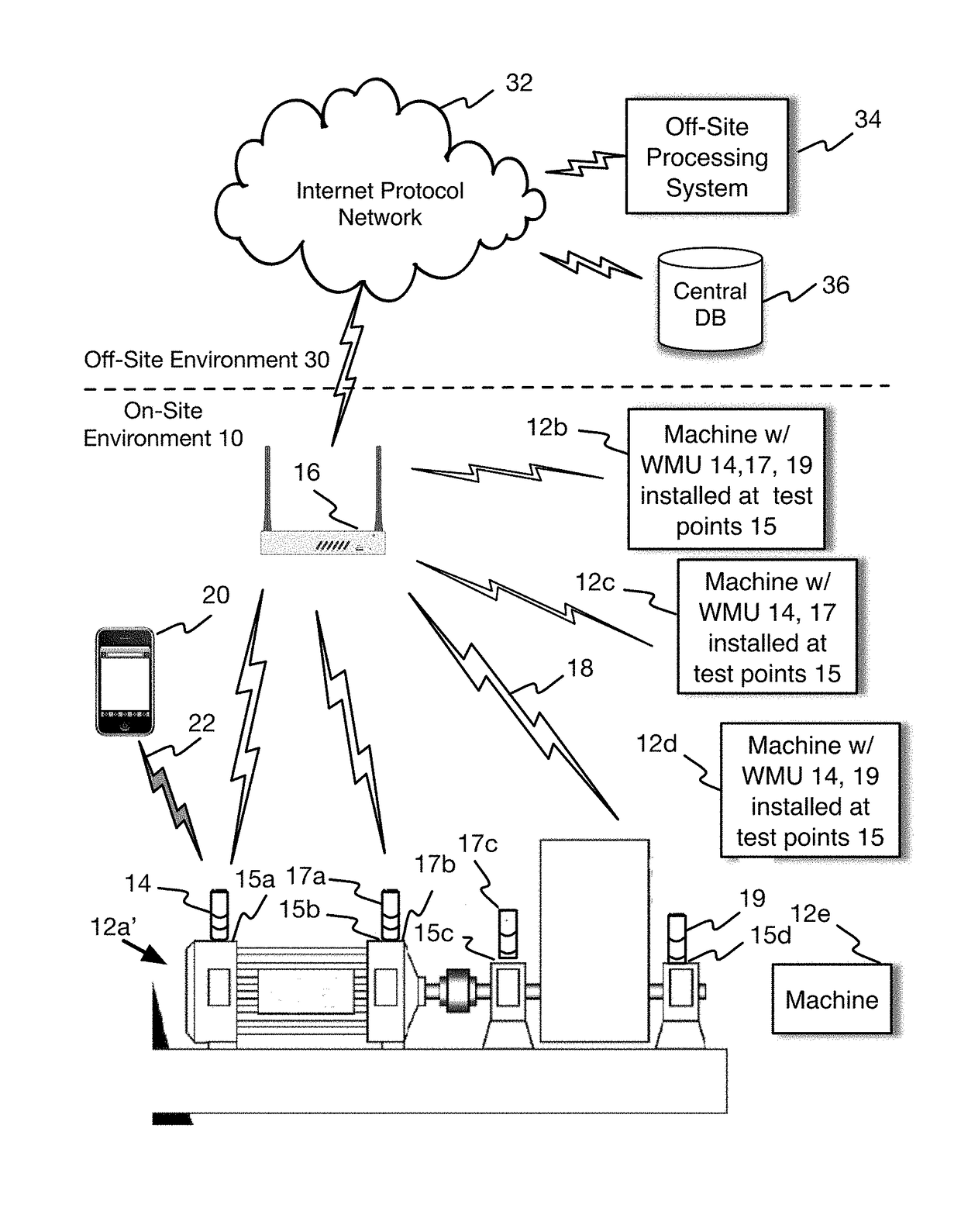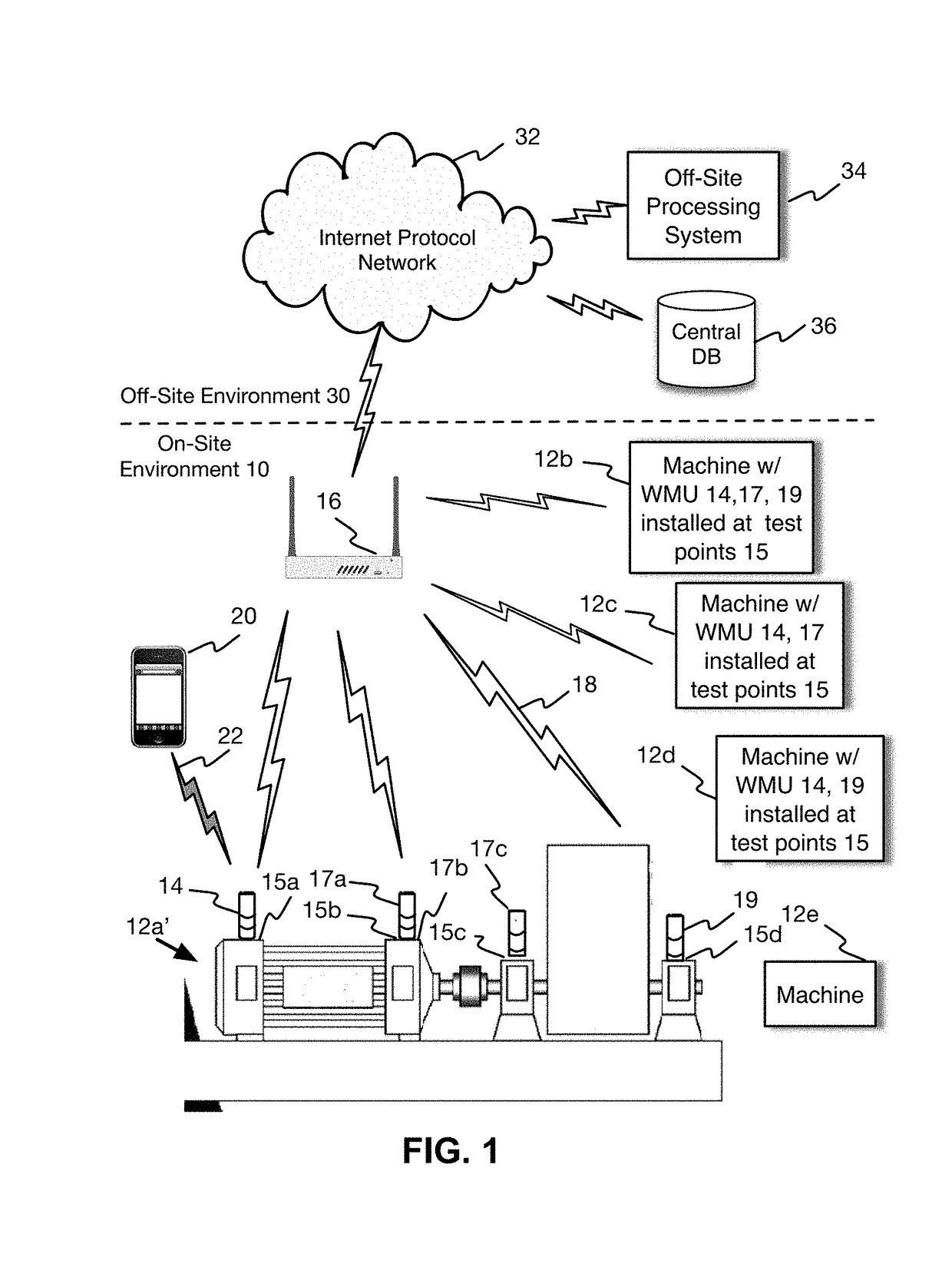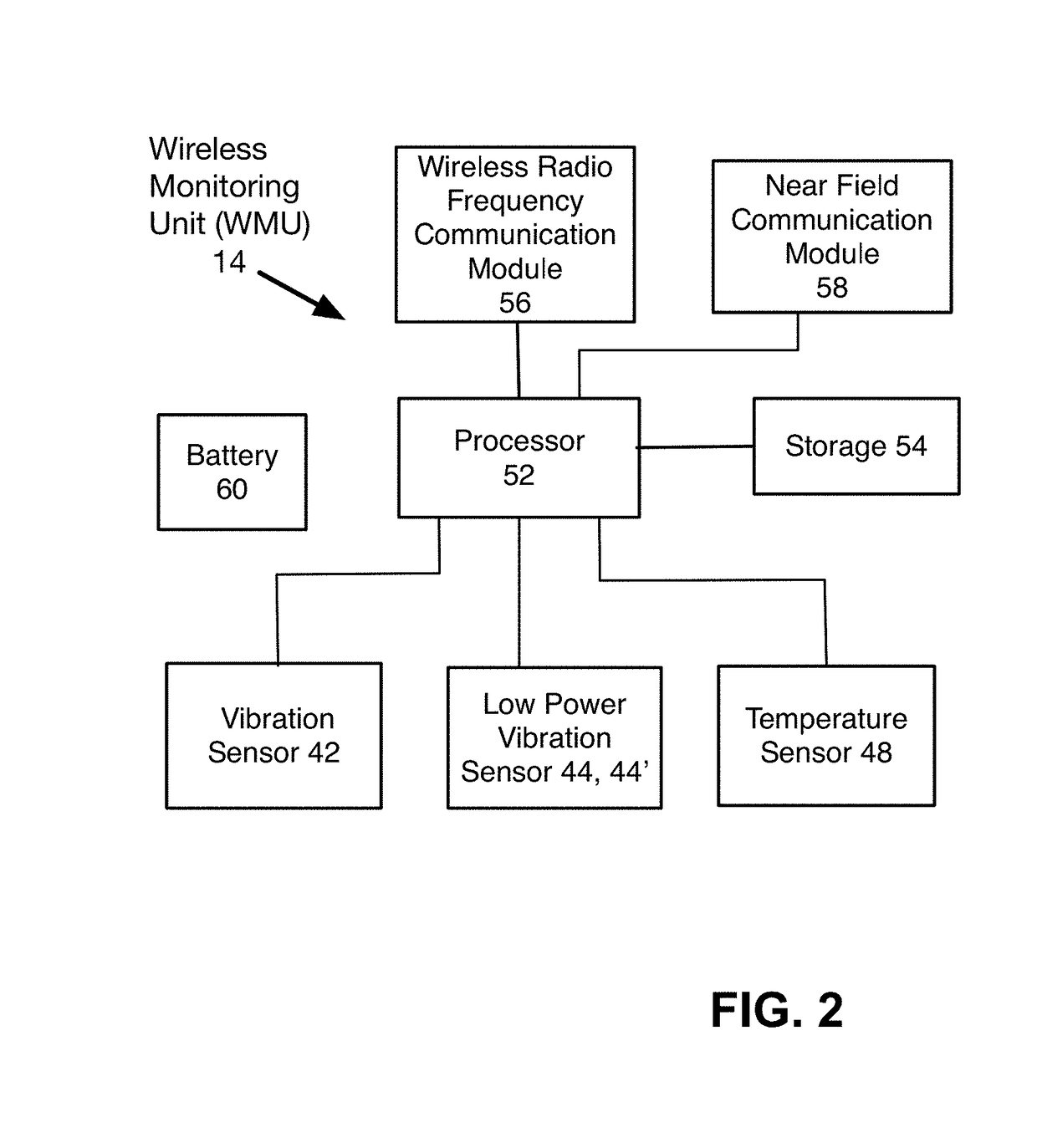Power-efficient data-load-efficient method of wirelessly monitoring rotating machines
a technology of rotating machines and data collection, applied in the field of collecting and analysing machine diagnostic data, can solve the problems of fewer technicians able to analyze machine diagnostic data for predicting faults, unable to effectively monitor the host machine, and unexpected failure of the machine, so as to reduce the amount of power consumed, optimize the effect of diagnostic monitoring effectiveness and power consumption reduction
- Summary
- Abstract
- Description
- Claims
- Application Information
AI Technical Summary
Benefits of technology
Problems solved by technology
Method used
Image
Examples
Embodiment Construction
[0031]In the following description, for purposes of explanation and not limitation, specific details may be set forth, such as particular terminals, devices, components, techniques, protocols, interfaces, hardware, etc. in order to provide a thorough understanding of the present invention. However, it will be apparent to one skilled in the art that the present invention may be practiced in other embodiments that depart from these specific details. Detailed descriptions of well-known computers, terminals, devices, phones, components, techniques, protocols, interfaces, and hardware are omitted so as not to obscure the description of the present invention. Accordingly, computer components and other components, protocols, and interfaces, known to one of ordinary skill in the art of machine vibration data collection and analysis are intended to be inferred into the detailed description. The terms fault and defect are used interchangeably herein, and are not intended to have a different m...
PUM
 Login to View More
Login to View More Abstract
Description
Claims
Application Information
 Login to View More
Login to View More - R&D
- Intellectual Property
- Life Sciences
- Materials
- Tech Scout
- Unparalleled Data Quality
- Higher Quality Content
- 60% Fewer Hallucinations
Browse by: Latest US Patents, China's latest patents, Technical Efficacy Thesaurus, Application Domain, Technology Topic, Popular Technical Reports.
© 2025 PatSnap. All rights reserved.Legal|Privacy policy|Modern Slavery Act Transparency Statement|Sitemap|About US| Contact US: help@patsnap.com



